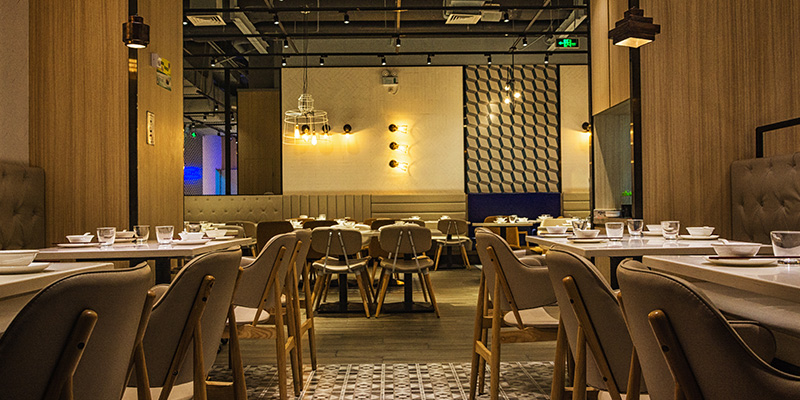
A Complete Guide to Insulation for Restaurants - Energy Efficiency Solutions
As the restaurant industry strives for sustainability and cost-effectiveness, energy efficiency has become a crucial consideration. One often overlooked yet highly effective solution is the proper insulation of restaurant buildings. By investing in quality insulation, restaurant owners can significantly reduce energy consumption, enhance customer comfort, and maximise cost savings. In this article, we will explore the benefits of insulation in restaurants and provide valuable insights on how to maximise energy efficiency.
Understanding the Importance of Insulation in Restaurants
Why Insulation Matters
Proper insulation is essential for restaurants due to its ability to prevent heat loss, eliminate drafts, and improve thermal efficiency. Restaurants are bustling environments with continuous heating and cooling demands, making them vulnerable to energy waste. Insulation acts as a barrier, reducing the transfer of heat through walls, roofs, and floors. By minimising heat loss and gain, insulation helps maintain a comfortable temperature inside the restaurant and reduces the strain on heating, ventilation, and air conditioning (HVAC) systems.
Energy Consumption in Restaurants
Restaurants have high energy demands driven by cooking equipment, lighting, refrigeration, and HVAC systems. The HVAC systems alone can account for a significant portion of energy consumption. Inefficient insulation leads to heat loss in colder months and heat gain in warmer seasons, forcing HVAC systems to work harder and consume more energy. By investing in insulation, restaurant owners can reduce their energy consumption, lower utility bills, and make substantial cost savings over time.
Areas of Focus for Insulation in Restaurants
Exterior Walls Insulation
Insulating exterior walls is crucial for energy efficiency. By insulating the walls, restaurants can minimise heat transfer and maintain a stable indoor temperature. Spray foam insulation, mineral wool, or rigid foam boards are popular options for exterior wall insulation. These materials provide excellent thermal resistance and help create a well-insulated building envelope.
Roof Insulation
Roof insulation plays a significant role in energy efficiency. Uninsulated or poorly insulated roofs allow heat to escape during colder months and penetrate the building during hot weather. This puts a strain on HVAC systems and increases energy consumption. Polyisocyanurate (PIR) boards and mineral wool are common insulation materials for restaurant roofs. They provide excellent insulation properties, reducing heat transfer and contributing to lower energy usage.
Floor Insulation
Insulating restaurant floors offers several benefits. It prevents heat loss through the ground, improves comfort for customers and staff, and reduces the workload on HVAC systems. The choice of insulation material depends on the type of flooring. Rigid foam boards or reflective insulation are often used for concrete or suspended floors, providing effective thermal insulation and creating a pleasant dining environment.
Additional Tips for Maximising Energy Efficiency
Air Sealing and Draft Reduction
Alongside insulation, proper air sealing is essential to prevent drafts and air leakage. Identifying and sealing air leakage points, such as gaps around windows and doors, ductwork, and electrical outlets, helps maintain a more controlled indoor environment. Weatherstripping, caulking, and sealing gaps with spray foam insulation are effective techniques for reducing air infiltration and improving energy efficiency.
Upgrading Windows and Doors
Energy-efficient windows and doors are worth considering to further enhance insulation in restaurants. Double-glazed windows with low-emissivity (low-e) coatings or gas-filled panes provide superior thermal insulation, reducing heat transfer and increasing energy efficiency. Upgrading doors with weatherstripping or energy-efficient models helps minimise air leakage and enhance insulation performance.
HVAC System Optimisation
Insulation works synergistically with an optimised HVAC system. Regular maintenance of HVAC equipment, including filter cleaning, system inspections, and tune-ups, ensures optimal performance. Upgrading to energy-efficient HVAC units and utilising programmable thermostats can further enhance energy savings. Proper insulation reduces the workload on HVAC systems, allowing them to operate more efficiently and consume less energy.
Benefits of Energy Efficiency in Restaurants
Cost Savings and Return on Investment
Investing in energy efficiency measures, including insulation, leads to significant cost savings over time. By reducing energy consumption, restaurant owners can lower utility bills and increase their bottom line. While insulation upgrades require an initial investment, the long-term return on investment (ROI) is substantial, making it a worthwhile endeavour for restaurants.
Enhanced Customer Comfort
Insulation contributes to a comfortable dining experience for customers. By maintaining a consistent indoor temperature, insulation helps create a pleasant ambiance regardless of external weather conditions. Patrons appreciate a comfortable environment, resulting in improved customer satisfaction and the potential for repeat business.
Conclusion
Proper insulation is a valuable energy efficiency solution for restaurants. By reducing energy consumption, lowering operational costs, and enhancing customer comfort, insulation proves to be a wise long-term investment. Whether insulating exterior walls, roofs, or floors, restaurant owners have the opportunity to increase energy savings while contributing to a more sustainable future. By implementing these energy efficiency measures, restaurants can thrive in an environmentally conscious and financially prudent manner.


